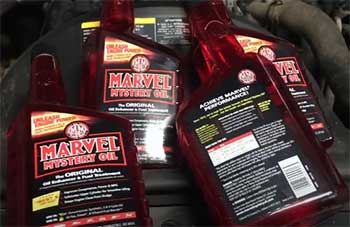Underground boring, also known as horizontal directional drilling, allows you to create tunnels beneath pathways, gardens, driveways or other surfaces without digging large, unsightly trenches.
Specialized boring tools like the Bullet Mole provide an easy way to bore underground tunnels for running wires, pipes or cables.
But the Bullet Mole isn’t the only game in town when it comes to boring tools. In this comprehensive guide, we’ll explore some of the top Bullet Mole alternatives on the market, outlining the pros and cons of each to help you select the right tool for your underground boring needs.
Overview of Bullet Mole
Before diving into the alternatives, let’s first take a look at the features and capabilities of the Bullet Mole itself. The Bullet Mole is a pneumatic hammer that attaches to the end of a garden hose.
It pulverizes the soil as it’s dragged through the ground, allowing you to create a tunnel. Here are some key attributes:
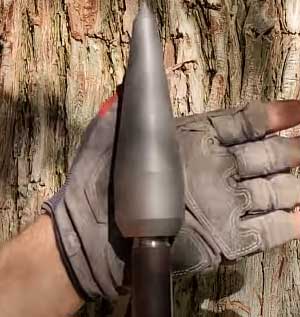
- Creates a tunnel up to 30 feet long and 2 inches in diameter
- Pneumatic design runs off standard garden hose water pressure
- Lightweight and easy to use
- Can bore 12-18 inches deep
- Good for compacted soils but not for heavy clay
- Affordable price under $50
The Bullet Mole provides a simple, low-cost way to undertake small underground boring projects.
But there are some downsides to consider. The narrow 2″ tunnel diameter makes it difficult to fit multiple pipes or wires.
It can’t bore through dense, compacted or rocky soils. And the manual labor involved makes longer tunnels quite taxing.
For larger projects or bile tough soil conditions, you may want to consider some alternatives that improve upon the Bullet Mole’s capabilities.
Powerful Electric Underground Drills
Electric underground power drills provide more strength and versatility for boring through all types of soil conditions. Here are two excellent electric drill options:
Gorilla Dirt Torpedo
- Powerful 5 amp electric drill
- Creates tunnels up to 3″ wide x 24″ deep
- Equipped with gorilla grip handles for added torque
- Carbide tipped drill bit included
- Weighs 10 lbs
Pros
- More power for dense or compacted soil
- Wider tunnel diameter
- Deep boring capacity
Cons
- Requires electrical outlet access
- Higher cost around $170
The Gorilla Dirt Torpedo provides a big step up in power from the Bullet Mole, allowing you to drill wider, deeper tunnels with ease. The electric drill design makes fast work of dense soils. The only downside is you need an outdoor electrical outlet to power it.
Ground Hawg Electric Earth Drill
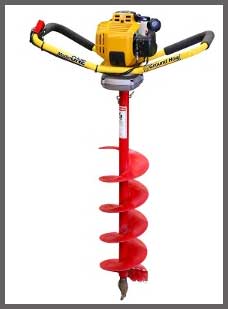
- 7 amp electric drill
- Tunnels up to 3″ wide x 16″ deep
- Weighs just 8 lbs
- Safety trigger lock
Pros
- Excellent power-to-weight ratio
- Affordably priced under $100
- Compact and easy to operate
Cons
- Not as robust as Gorilla Dirt Torpedo
- Still requires outdoor electrical outlet
The Ground Hawg is a lightweight, compact electric drill that provides good power for the price.
It can’t dig quite as deep as the Gorilla Dirt Torpedo but offers impressive boring capabilities for its small stature. Just be aware that you’ll need an outdoor electrical source to run it.
Water Powered Boring Tools
If you don’t have access to an electrical outlet where you want to bore, water powered tools are an ideal alternative. Let’s look at two top water driven boring devices:
Yard Butler Rocket Blaster Boring Tool
- Uses standard garden hose water pressure
- Creates 2″ wide tunnels up to 18″ deep
- Weighs just 2 lbs
- Requires no electricity or batteries
Pros
- Super lightweight and compact
- No electrical source required
- Affordable under $40
Cons
- Not as powerful as electric models
- Smaller tunnel diameter
The Yard Butler Rocket Blaster allows you to undertake small boring projects anywhere with access to a garden hose. It provides a lightweight, highly portable boring solution without the need for electricity. Just don’t expect the power of an electric drill.
Powerhouse International Max II Pro Boring Tool
- Runs off any garden hose
- Tunnels up to 3″ wide x 24″ deep
- Weighs 4 lbs
- Rubber comfort grip handles
Pros
- No electrical source required
- Good power for a water-driven tool
- Can handle dense soils better than Yard Butler
Cons
- Higher cost around $80
- Heavier than Yard Butler
The Powerhouse Max II Pro delivers impressive boring abilities from just a standard garden hose. It’s significantly more powerful than the Yard Butler and can create wider, deeper tunnels. The extra power does come at a higher price, but it’s a great electrical-free option.
Gasoline-Powered Underground Boring Machines
For heavy duty boring applications, gasoline-powered machines are the most rugged, powerful options out there. Two excellent gas-powered models include:
Barracuda Underground Boring Machine
- 5 HP gasoline engine
- Bores tunnels up to 6″ wide x 48″ deep
- Weighs 75 lbs
- Comes with auger, pointers, pulling cable
Pros
- Most powerful boring capabilities
- Large tunnel diameter
- Deep boring depth
Cons
- Very heavy and not portable
- High cost around $1,300
- Requires fuel and oil
With its robust 5HP engine, the Barracuda can power through any type of soil condition. It’s the ultimate heavy duty solution for large diameter or deep tunnels. Just be prepared to handle the hefty weight and high price.
Ditch Witch RT45 Riding Boring Machine
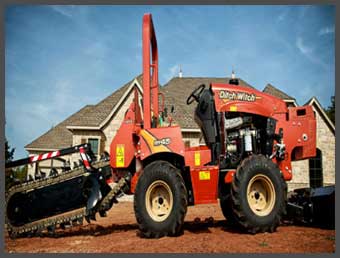
- 7HP gasoline engine
- Up to 6″ wide tunnels
- Depth up to 60″
- Built-in transport wheels
- Weighs 500 lbs
Pros
- Very powerful performance
- Deep boring capacity
- Smooth power steering
Cons
- Extremely heavy
- High cost around $6,500
- Not self propelled
The Ditch Witch RT45 is a commercial-grade riding boring machine that lets you drill substantial tunnels from a seated position. But the huge price tag and massive 500 pound weight make it overkill for typical residential settings. It’s best suited for large-scale municipal projects.
Auger-Style Boring Tools
Auger-style borers are an alternative approach to hammering and drilling machines. Handheld augers use spiral screw tips to cleanly bore narrow tunnels:
Seymour WR24 24″ Auger Bit
- 24″ long x 1″ diameter spiral auger
- Smooth rounded T handle
- Carbon steel construction
Pros
- Inexpensive at around $20
- Lightweight manual operation
- Narrow 1″ holes good for running cables
Cons
- Very narrow tunnel diameter
- Manual labor can be tiring
- Not for dense or rocky soils
The Seymour WR24 provides an extremely affordable way to undertake small scale boring like running cable under pathways. But the 1″ tunnels are too narrow for plumbing or irrigation. And dense soils quickly become difficult.
Power Planter Earth Auger Powerhead
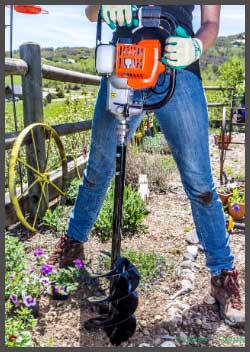
- Compatible with auger style extensions
- Powered handle eliminates manual labor
- Weighs just 10 lbs
Pros
- Makes easy work of manual augering
- Way less tiring than hand augers
- Affordably priced around $150
Cons
- Requires outdoor electrical source
- Larger diameter augers cost extra
- Not for dense or rocky conditions
The Power Planter powerhead allows you to bore clean, narrow tunnels without strenuous hand cranking.
But you’ll need larger, pricier auger bits for wider holes. And extremely dense soil is still a challenge.
Which Is The Best Bullet Mole Alternative?
With so many underground boring tools to choose from, which is the best Bullet Mole alternative? Here are some key recommendations based on different needs:
- For wider, deeper tunnels – Go electric with the Gorilla Dirt Torpedo or gas-powered with the Barracuda.
- If no electrical source – Use water powered options like the Powerhouse Max II Pro.
- For occasional small jobs – Try the affordable Yard Butler Rocket Blaster.
- Auger tools excel at quick, narrow holes for cables.
- Riding trenchers like the Ditch Witch RT45 are overkill for most residential uses.
There’s no one-size-fits-all solution. Assess your soil conditions, power availability, tunnel size and workload to select the right Bullet Mole alternative for your specific boring needs. Carefully consider the tradeoffs between power, size, price and ease of use for each option.
Also Read: Bridjit Substitutes To Consider.
Frequently Asked Questions (FAQ)
Boring under a driveway is made easier with the right soil conditions and boring tool. Here are some tips:
1. Pick a drilling location where the soil under the driveway isn’t extremely dense, compacted or rocky. Sandy or loamy soils are best.
2. Opt for a powerful boring tool like an electric drill or gas-powered auger which can power through moderate soil densities. Avoid lighter manual tools.
3. For concrete driveways under 6 inches thick, a tool like the Gorilla Dirt Torpedo or Powerhouse Max II Pro should work if soil conditions allow. Over 6 inches may require a gas-powered boring machine.
4. Allow sufficient boring depth to run utilities or pipes well underneath the driveway to prevent damage. 12-18 inches is usually sufficient.
5. Use spray marking paint to identify the entry and exit points for accuracy. Carefully measure tunnel length to ensure straight boring.
6. Be extremely careful to avoid underground electrical lines, gas pipes or other hazards when boring.
A Bullet Mole is very simple to use. Just follow these basic steps:
1. Mark the entry and exit points for your underground tunnel. Estimate the straight line distance.
2. Attach a garden hose to the Bullet Mole and turn on the water to full pressure.
3. Position the Bullet Mole over the planned entry point. Grip both handles firmly.
4. Activate the water and apply downward force to allow the bullet-shaped tip to penetrate the soil.
5. Once underground, slowly drag the Bullet Mole in a straight line towards the exit point, pulverizing the soil to create a tunnel.
6. Make small lateral motions if needed to guide the Bullet Mole in a straight path.
7. When the Bullet Mole reaches the exit point, turn off water and detach hose. Carefully pull it back through the tunnel.
8. The tunnel is now ready for pipes, wires, sprinklers or other purposes. Refill any excess opening with dirt.
It’s best to wear protective gloves and eyewear when operating a Bullet Mole. Make sure to account for compacted soil or hidden hazards that may impede the boring process.
Closing Remarks
From powerful electric drills to water powered augers, there are many great alternatives to the standard Bullet Mole for your underground boring needs.
Options like the Gorilla Dirt Torpedo provide extra strength and wider diameter boring, while tools like the Yard Butler Rocket Blaster offer lightweight, electrical-free operation.
Determine your soil conditions, tunnel requirements and available utilities first when deciding on the right boring tool for your project. With the proper preparation and research, you can bore extensive tunnels to run utilities or sprinklers anywhere with minimal surface disruption.
